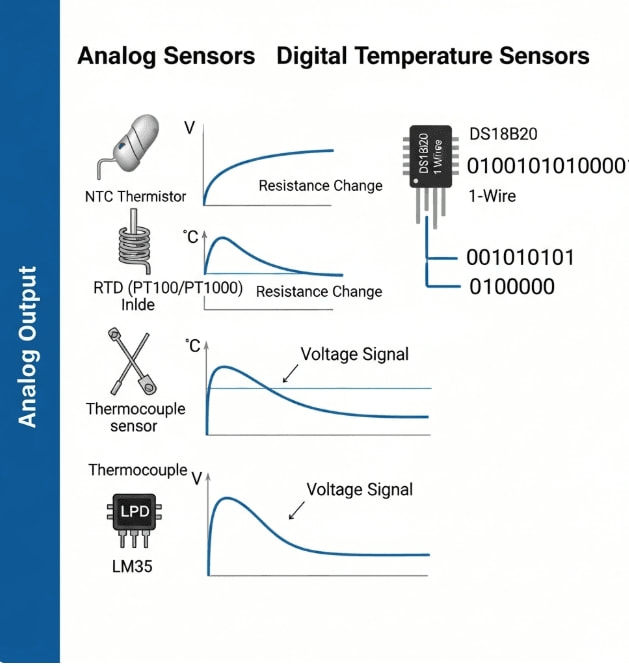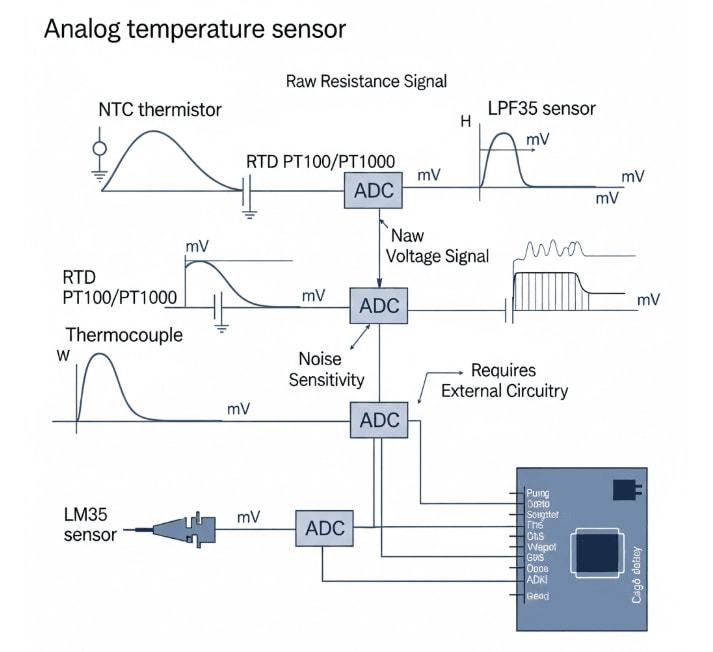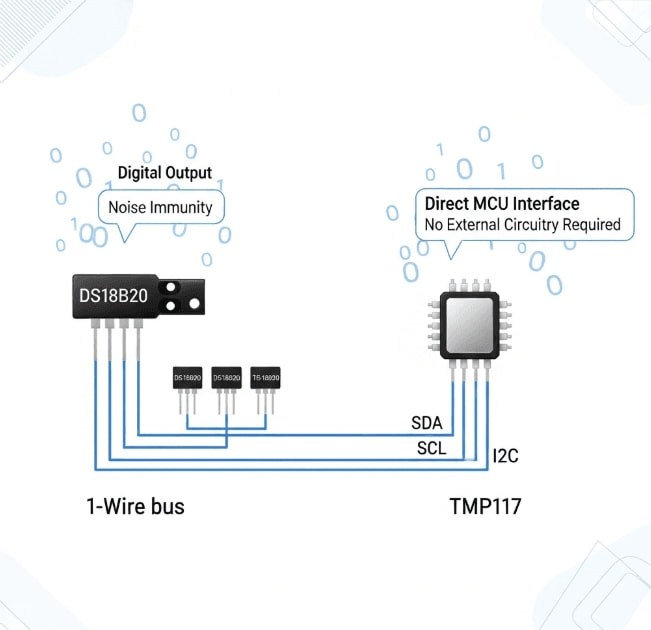Understanding Probe Temperature Sensor Output Types
Nov 18, 2025Choosing the right probe temperature sensor is about more than just accuracy and range. The type of output signal is also important. It affects your whole system design.
As a maker of many types of sensors, we understand the importance of knowing the signal type. We offer classic NTC thermistors, RTDs (PT100/PT1000), and modern sensors like DS18B20 and TMP117. Understanding the signal type is the first step to success.

Analog sensors are the "classic" solution. They provide a continuous signal — typically a change in resistance or voltage — that is proportional to the temperature.
This raw signal is vulnerable to electrical noise and requires external circuitry. Your microcontroller cannot directly measure resistance. You need to create a conditioning circuit, like a voltage divider or amplifier. Then, use an Analog-to-Digital Converter (ADC) to change the signal into a value your system can understand.

Best for: Cost-sensitive designs, high-resolution analog systems, and applications where you fully control the signal conditioning.
Digital sensors are "smart" devices. They are integrated circuits (ICs). These ICs have an analog sensor, signal conditioning, an ADC, and digital communication logic all in one small package.
DS18B20 (using the 1-Wire protocol) and TMP117 (two-wire, SMBus, and I2C interface-compatible) are prime examples.
When you "talk" to these sensors using their digital protocol, they don't send you a raw, noisy voltage. They send you a fully processed, calibrated, and precise temperature reading in binary.
The benefits are huge:
Best for: Applications requiring high accuracy with minimal design effort, noisy electrical environments, and systems using microcontrollers.

The choice is simple:
Do you need a basic, flexible part for a custom analog design (NTC/RTD)? Or do you want a smart, noise-resistant sensor that provides a direct temperature reading (DS18B20/TMP117)?
Whatever your application, we Focusens manufacture high-quality sensors you need to get the job done.
|
Sensor Type |
Output Type |
Signal / Interface |
Typical Accuracy |
External Circuitry Needed? |
Key Feature / Best For |
|
NTC Thermistor |
Analog (Resistive) |
Resistance |
Medium |
Yes (Voltage divider, ADC) |
Low cost, high sensitivity |
|
RTD (PT100/PT1000) |
Analog (Resistive) |
Resistance |
High |
Yes (Precision circuit, ADC) |
High accuracy & stability |
|
Thermocouple |
Analog (Voltage) |
Millivolts (mV) |
Medium |
Yes (Amplifier, ADC, CJC) |
Extremely wide temperature range |
|
LM35 |
Analog (Voltage) |
Linear Voltage (e.g., 10mV/°C) |
Good |
Yes (ADC) |
Simplicity, linear analog output |
|
DS18B20 |
Digital |
1-Wire Protocol |
Good (e.g., 0.5°C) |
No (Direct to microcontroller) |
Ease of use, multiple sensors on one line |
|
TMP117 |
Digital |
I²C Protocol |
Very High (e.g., 0.1°C) |
No (Direct to microcontroller) |
High-precision, simple digital interface |
Email us and we will elaborate and matching the sensor that well suit your applications.